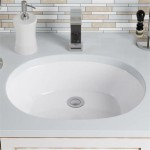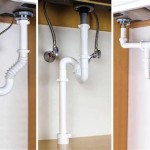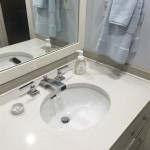How to Remodel a Bathroom
A bathroom remodel can be a significant investment, but it can also dramatically enhance your home's functionality and aesthetic appeal. Whether you're looking for a simple update or a complete overhaul, a well-planned bathroom remodel can create a space that's both beautiful and relaxing. This article will guide you through the essential steps involved in undertaking this project successfully.
1. Planning and Design
The planning phase is crucial for a successful bathroom remodel. Start by defining your goals and budget. Consider what you want to achieve: are you aiming for a modern, minimalist design, a luxurious spa-like experience, or something else entirely? Once you have a clear vision, create a detailed plan that includes the following:
- Layout: Determine the optimal arrangement of fixtures, furniture, and storage to maximize space and functionality. You may need to adjust existing plumbing and electrical wiring to accommodate your desired layout.
- Materials: Choose materials that align with your style and budget. Consider factors like durability, moisture resistance, and maintenance requirements. Popular bathroom materials include ceramic tile, natural stone, and waterproof laminates.
- Fixtures: Select new fixtures, such as a bathtub, shower, toilet, faucets, and vanity, that fit your desired aesthetic and functionality. Consider options like smart toilets, rain showerheads, and heated floors.
- Lighting: Lighting plays a crucial role in creating the right ambiance in your bathroom. Choose a combination of ambient, task, and accent lighting to achieve a balanced and functional space.
- Storage: A well-designed bathroom includes ample storage space. Incorporate cabinetry, shelves, and drawers to keep your bathroom organized and clutter-free.
Consider consulting with a professional designer or architect to help you develop a comprehensive plan that meets your needs and vision. They can provide expert advice on layout, materials, and fixtures, ensuring your bathroom remodel is both beautiful and functional.
2. Demolition and Preparation
Once your plan is finalized, it's time to start demolition. This involves removing existing fixtures, walls, and finishes to prepare the bathroom for renovation. Be sure to take the following steps:
- Protect your home: Cover furniture and floors with drop cloths or plastic sheeting to prevent damage from dust and debris.
- Turn off water and electricity: Disconnect the water supply to the bathroom and turn off the electrical circuit to prevent accidents. Ensure you have proper permits for any structural changes before starting.
- Remove fixtures: Carefully remove existing fixtures like the bathtub, shower, toilet, and vanity. Be sure to dispose of old materials responsibly.
- Demolish walls and floors: Remove old tiles, flooring, and any walls that need to be replaced. This may involve using specialized tools like sledgehammers or power tools. Be mindful of any load-bearing walls and ensure that any structural changes are approved by a building inspector.
It's essential to work safely during demolition. Wear protective gear, such as gloves, goggles, and a dust mask, and dispose of debris properly. If you're not comfortable handling demolition yourself, consider hiring a professional contractor.
3. Installation and Finishing
With the demolition complete, you can begin installing the new fixtures and finishes. This involves a series of steps, including:
- Plumbing and electrical: Install new plumbing and electrical lines as needed. Ensure the work is done by licensed and qualified professionals to meet safety standards.
- Framing: If you're making structural changes, build new walls and install framing as necessary. This may involve using wood or metal studs to support the new construction.
- Flooring and tiling: Install new flooring and tile. This may involve laying ceramic tiles, porcelain tiles, stone tiles, or even vinyl flooring. Consult with a professional tile installer for advice on tile selection, installation methods, and grout choices.
- Wall finishes: Apply new finishes to the walls, such as paint, wallpaper, or tile. Consider the moisture resistance of the chosen materials, and ensure proper ventilation to prevent mold and mildew growth.
- Fixtures installation: Install the new bathtub, shower, toilet, vanity, and other fixtures. Ensure they are properly connected to the plumbing and electrical systems, and follow the manufacturer's instructions for installation.
- Final touches: Install lighting fixtures, mirrors, towel bars, storage units, and other accessories. Ensure they are securely mounted and enhance the overall aesthetic of the bathroom.
During the installation phase, it's important to follow manufacturer's instructions and consult with professionals if needed. This ensures proper installation, preventing future leaks, electrical issues, or other problems.

Bathroom Remodeling A Step By Guide Budget Dumpster

Diy Small Bathroom Remodel Start To Finish Renovation And Design

Bathroom Workbook How To Remodel Your

Bathroom Remodeling A Step By Guide Budget Dumpster

Bathroom Remodeling A Step By Guide Budget Dumpster

Diy Small Bathroom Remodel Bath Renovation Project

A Guide To Budgeting For Your Bathroom Remodeling Hdr

Understanding Small Bathroom Remodel Costs And How To Save

Bathroom Remodeling Golden Rule Builders

Bathroom Remodel Guide Planning Cost And Amazing Ideas
Related Posts







